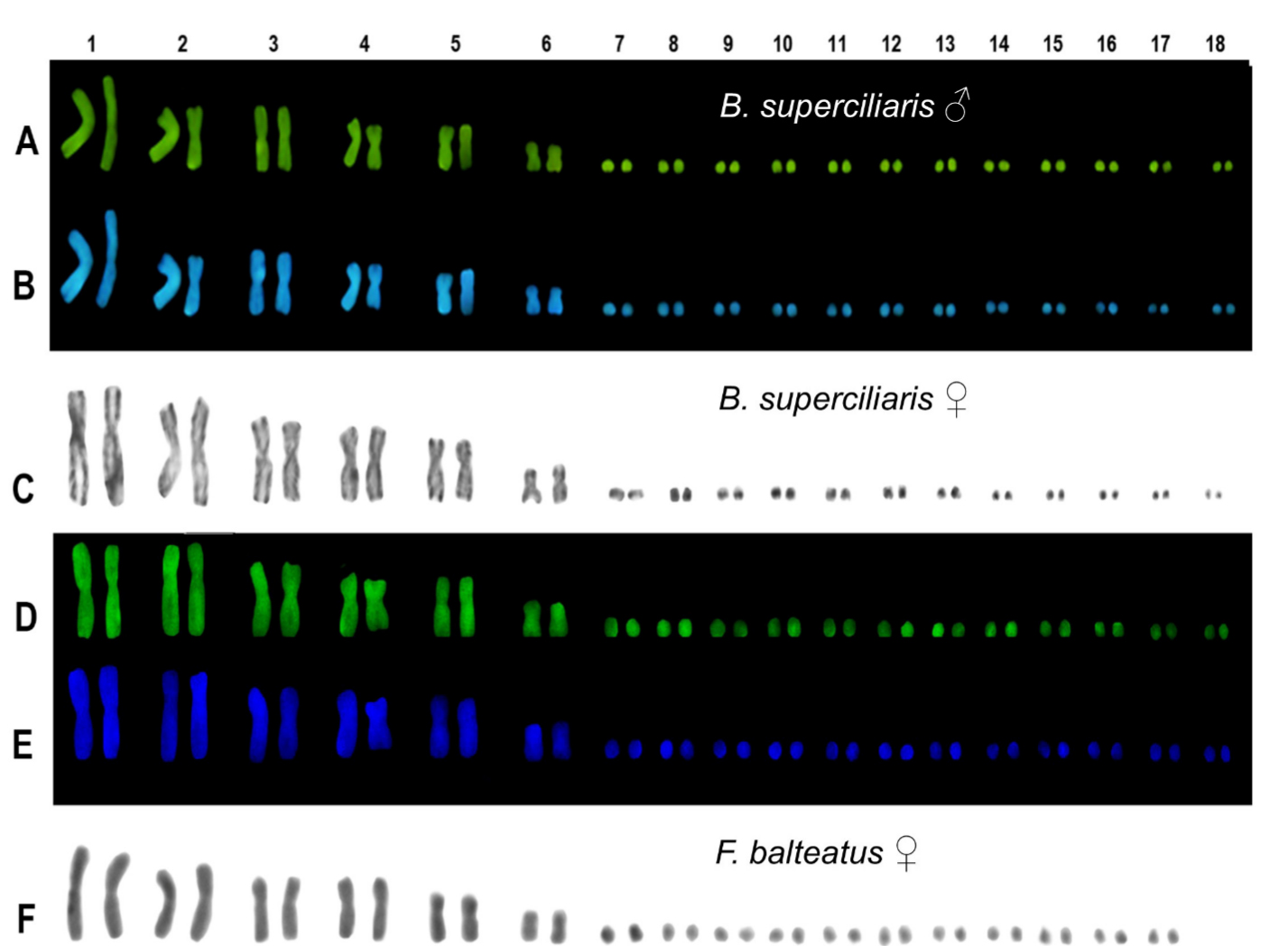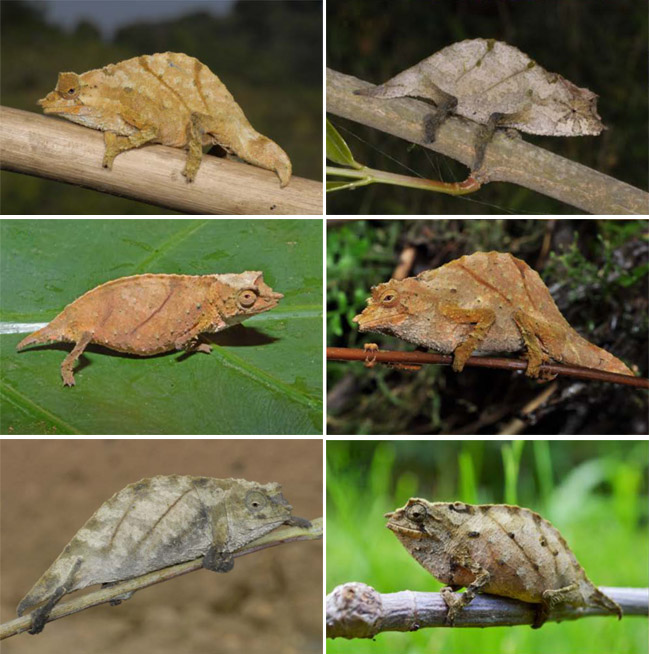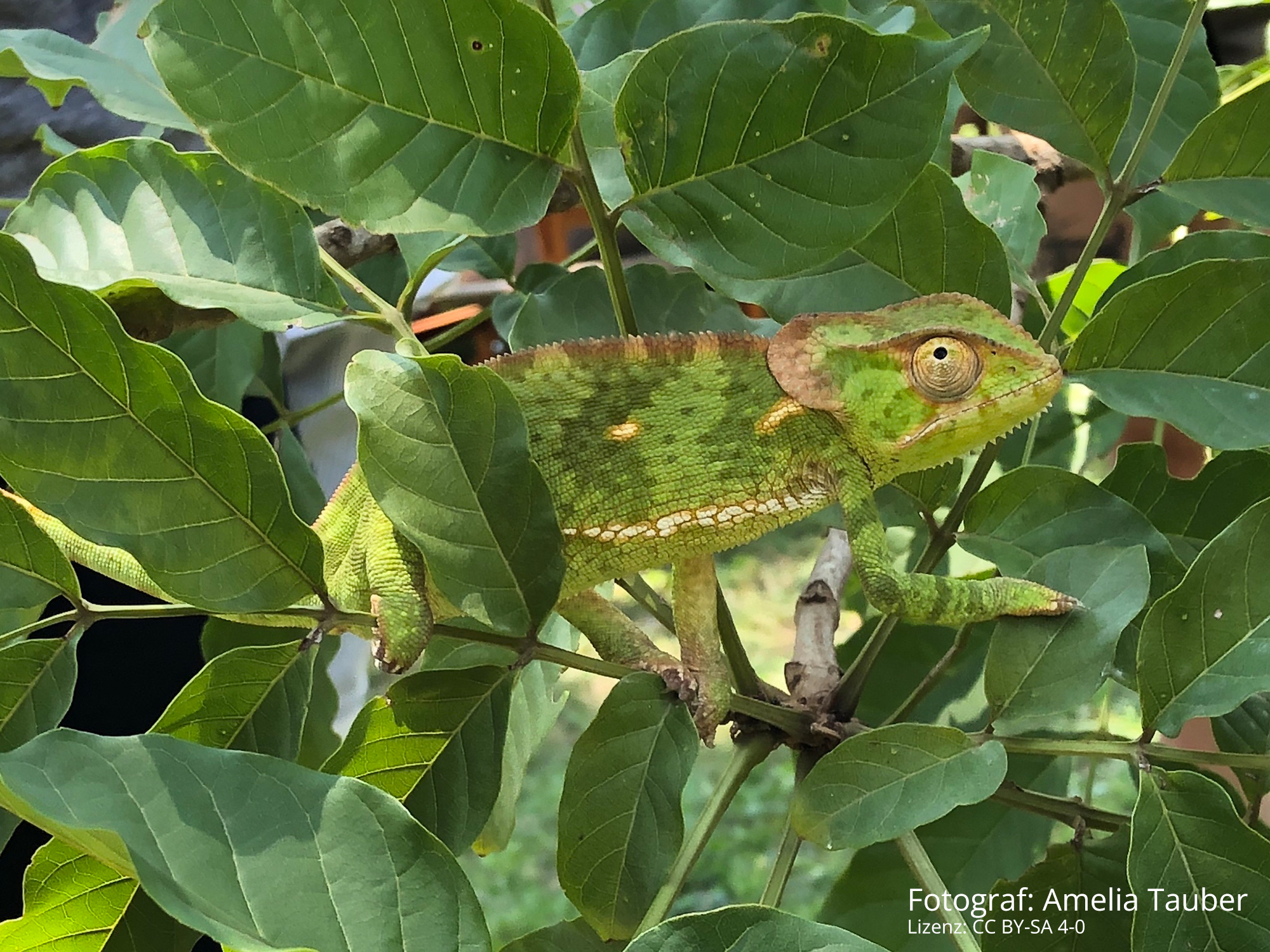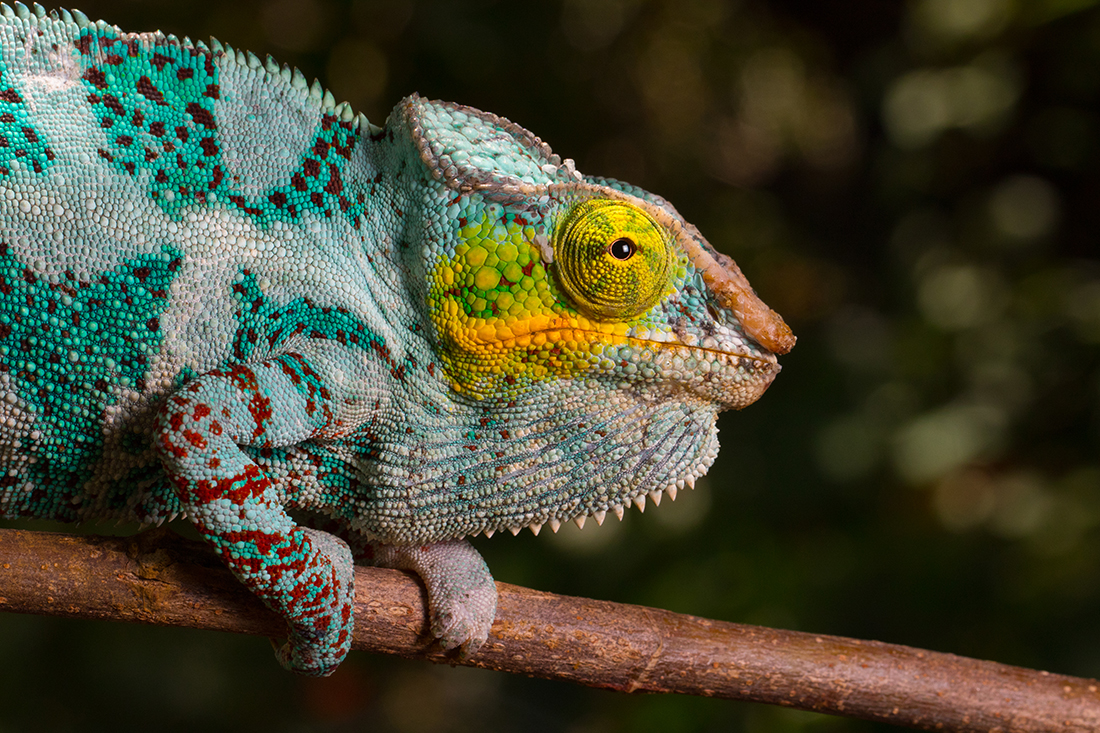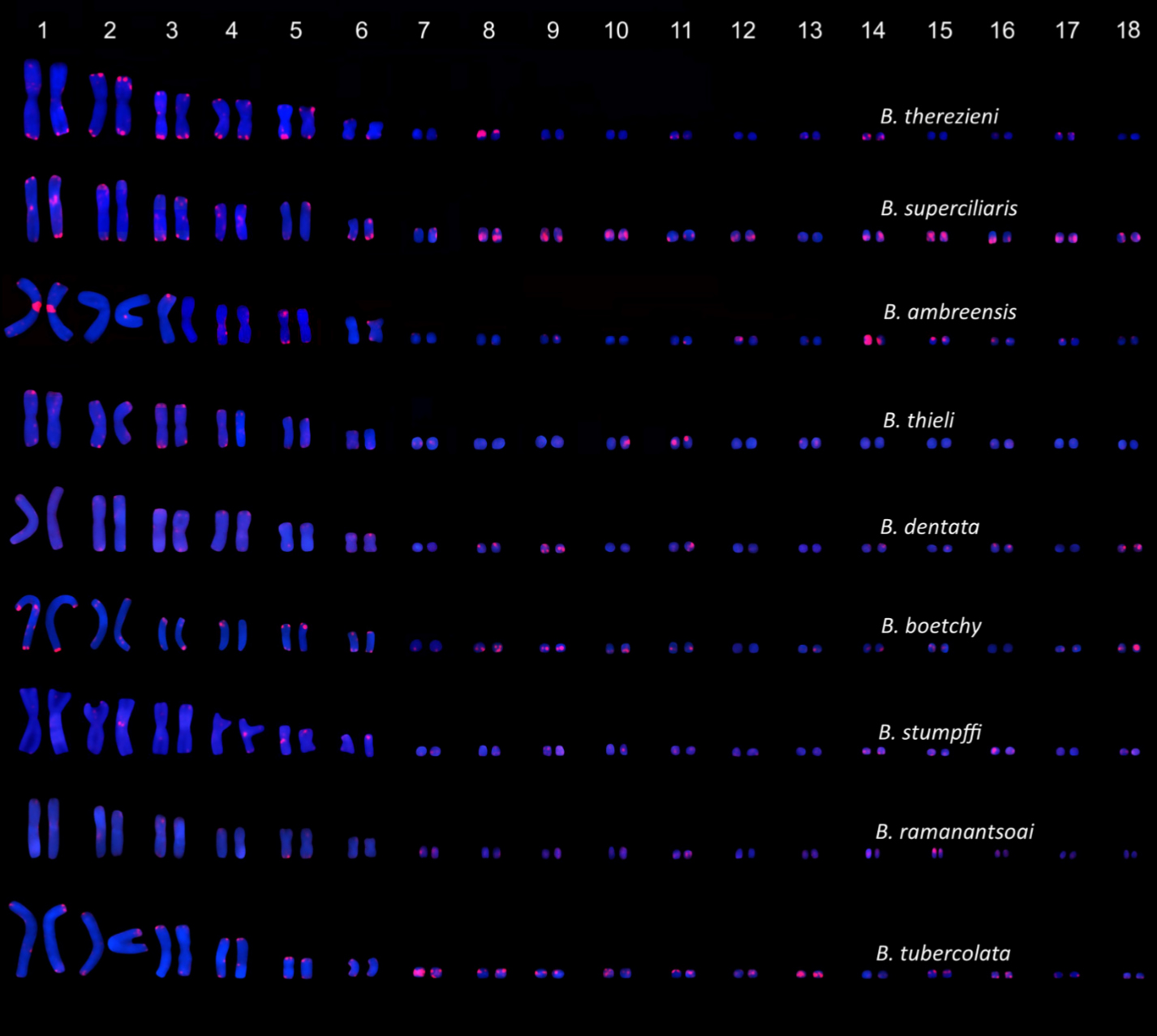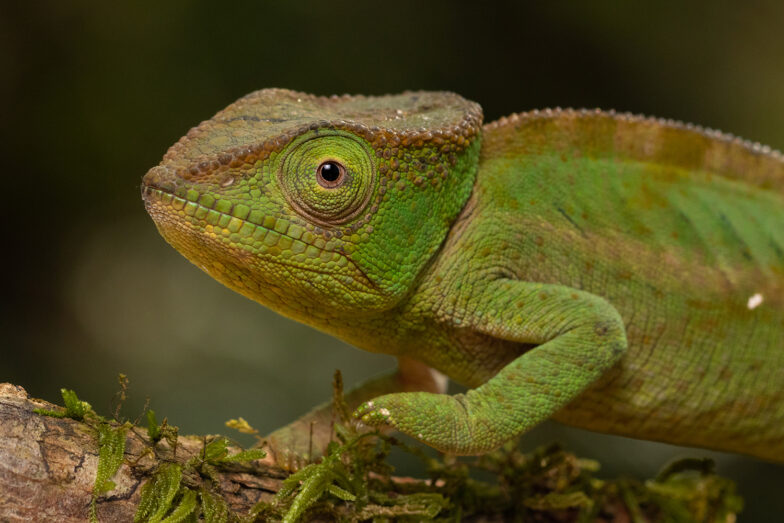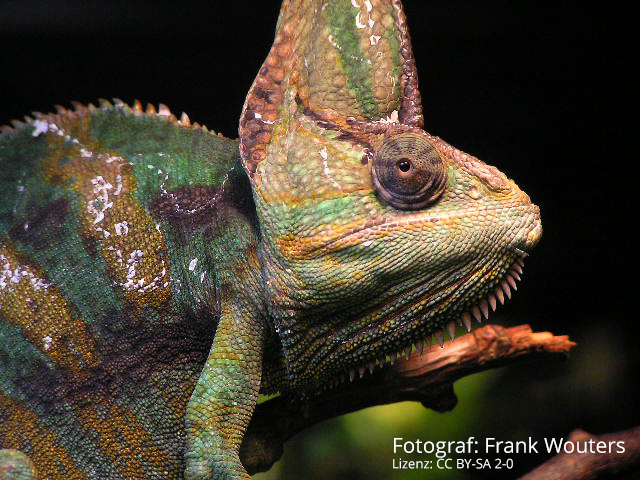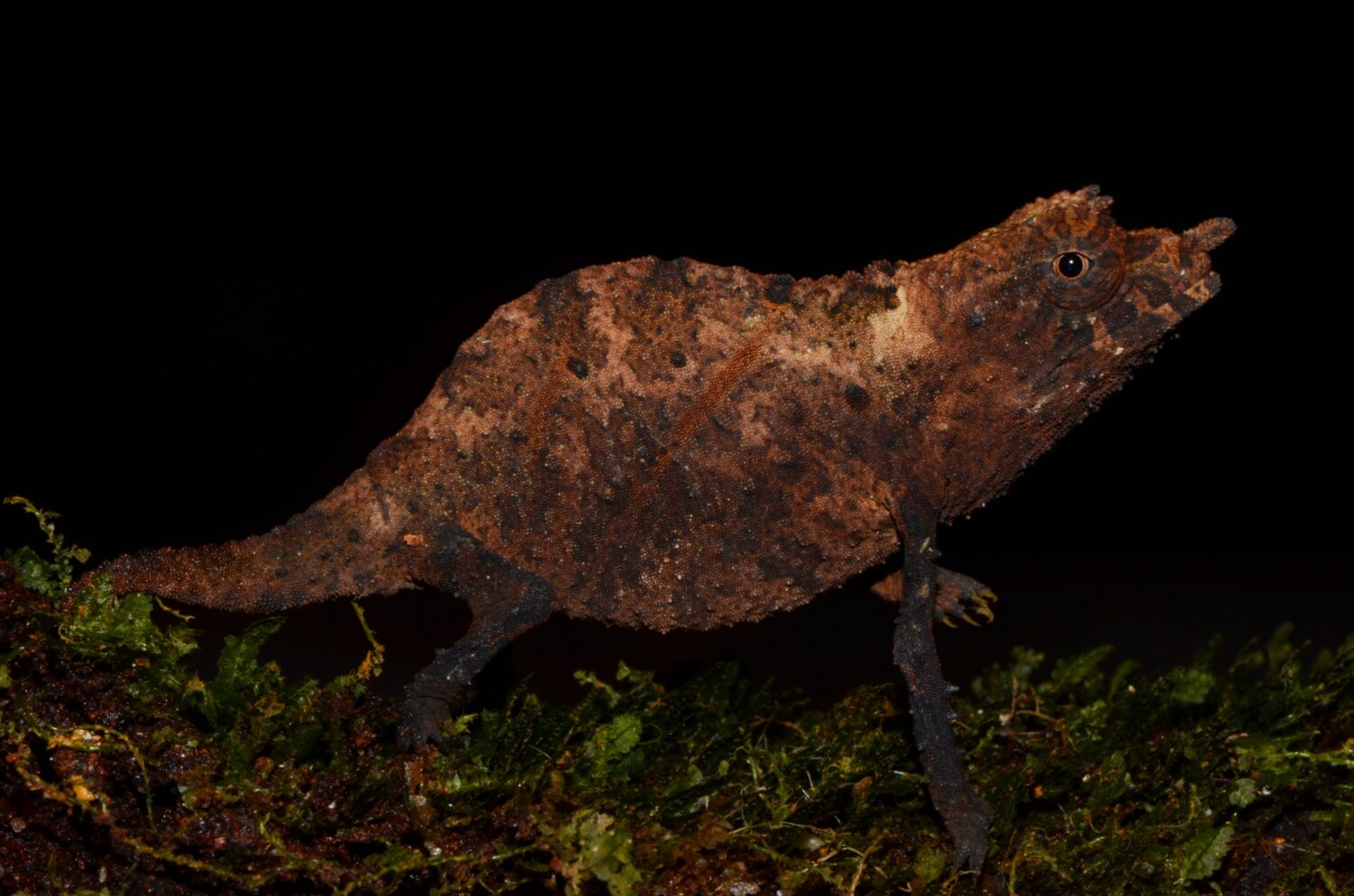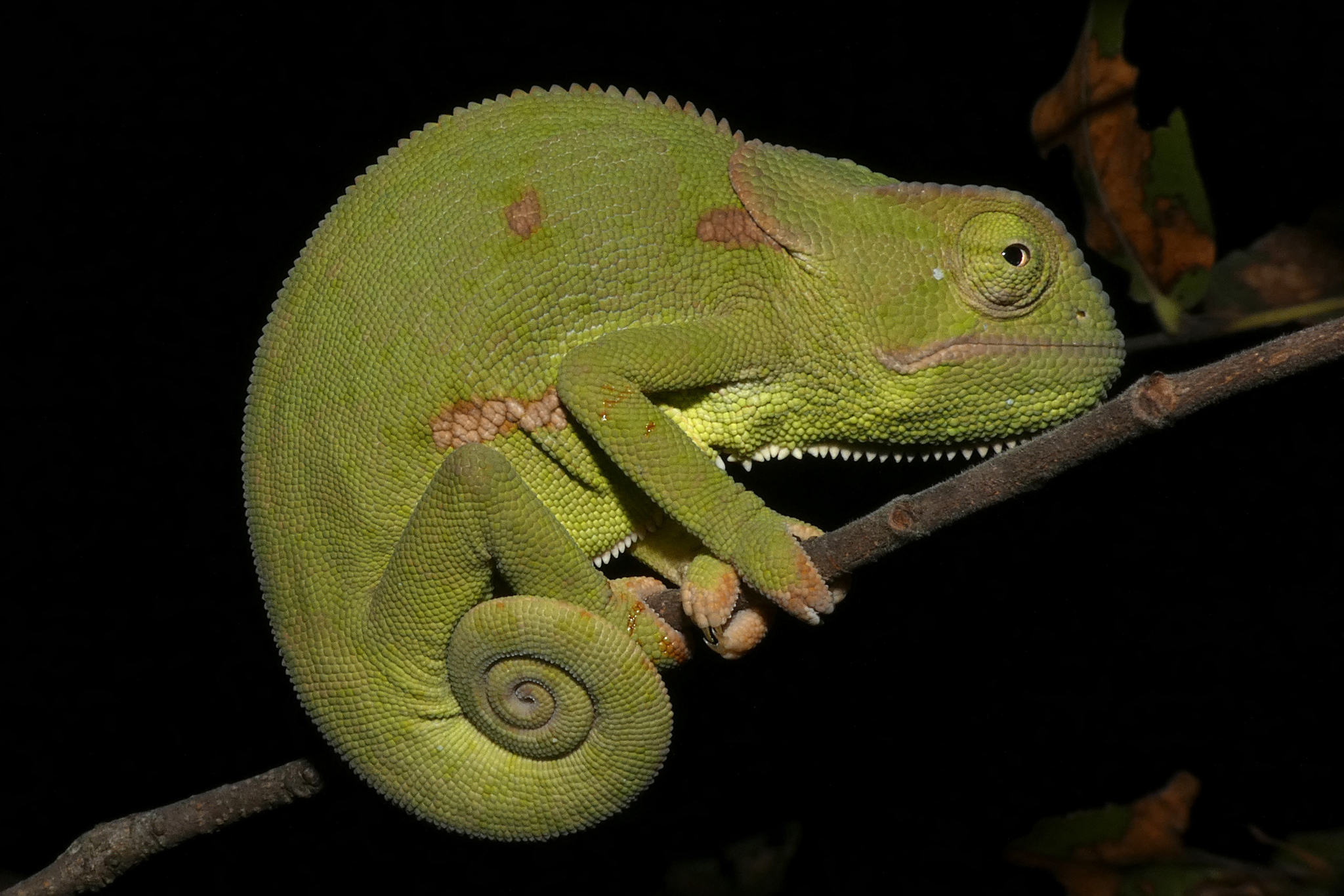There is still a lot to discover about the small, brown pygmy chameleons on the African mainland. After new species were discovered in the Rhampholeon uluguruensis/moyeri complex in Tanzania two years ago, international scientists have now taken a closer look at the Rhampholeon boulengeri complex. And as expected, new species have been discovered!
The pygmy chameleons from this complex inhabit various habitats along the Albertine Rif). This 6000 km long chain of mountains and rifts stretches from Lake Albert in Uganda to Lake Tanganyika. It crosses the Democratic Republic of Congo, Rwanda, Burundi and Tanzania. In the genus Rhampholeon, the species hardly differ externally, but often live in very different habitats or can be easily distinguished from each other genetically. The authors analysed over 130 pygmy chameleons from more than 20 different locations as well as the lectotypes (the holotype no longer exists) of the species Rhampholeon boulengeri. Using genetic analyses, they were able to identify five new Rhampholeon species.
The already known species Rhampholeon boulengeri, described by Grauer in 1908, occurs exclusively in its type locality according to the current data. This is the Itombwe Plateau in the Democratic Republic of Congo, at altitudes between 2100 and 2470 metres.
Rhampholeon plumptrei was named in honour of the English zoologist Andrew Plumptre. As chairman of the Wildlife Conservation Society, he has been campaigning for species conservation along the African Rift Valley for almost 20 years. The species lives in montane and submontane rainforest at altitudes of 1203-2269 metres, although they are most commonly found at 1200 to 1700 metres. The distribution ranges from the east of the Democratic Republic of Congo with the Kahuzi-Biega National Park to the west of Kenya to the Kakamega Forest National Reserve. In between, Rhampoleon plumptrei can be found in Bwindi Impenetrable National Park, in Mabira and in Kalinzu Central Forest Reserve in western Uganda. It has a clearly visible nasal appendage and a slightly shorter tail than Rhampholeon boulengeri. Rhampholeon plumptrei grows up to 60 mm in size. The males have a white colouration on the throat and belly and one or two diagonal dark stripes on the body. Most chameleons of this species have a dark-coloured tubercle on the back of the neck.
Rhampholeon nalubaale was named after the Luganda word for ‘goddess’, which is also the native name of Lake Victoria, the largest lake in Africa. So far, only the females of this species are known, males have not yet been found. Rhampholeon nalubaale occurs in submontane rainforest at altitudes of 513 to 1506 metres. It is most common in the Kibale National Park in Uganda, but can also be found in the Budungo Central Forest Reserve in the same country and in the Kahuzi-Biega National Park and the Itombwe Natural Reserve in the Democratic Republic of Congo. Rhampholeon nalubaale grows up to 56 mm long. One of the animals found was illuminated with UV light and some of the tubercles in the face fluoresced blue, as is already known from other chameleons – but this is new for the genus Rhampholeon. The species occurs together with Trioceros johnstoni and Kinyongia tolleyae.
Rhampholeon bombayi was named after the waYao explorer Sidi Mubarak Bombay. He was born in 1820 on the border between Tanzania and Mozambique and was sold to India as a slave at an early age. He later returned to Africa and made a name for himself on expeditions by British explorers in East Africa. Rhampholeon bombayi grows up to 55 mm long. It lives in montane forests at altitudes of 1450 to 2330 metres in Rwanda and the Democratic Republic of Congo. It has so far been recorded in Kahuzi-Biega National Park, Kabobo Natural Reserve, Itombwe Natural Reserve and Nyungwe Forest National Park. Trioceros johnstoni and Trioceros schoutedeni also live in the same forest. The animals have two or three dark lines diagonally on the body, the tail and extremities are often darker brown than the trunk.
Rhampholeon msitugrabensis was named after the Albertine Rift. The Swahili word for forest, msitu, and the German word for rift, Graben, were combined. This ground chameleon grows up to 49 mm in size. It inhabits forest edges near Mpishi close to Kibira National Park in Burundi. Rhampholeon msitugrabensis is also described from Mount Bigugu in Nyungwe Forest National Park in Rwanda, so that its occurrence extends from 1986 to 2699 metres. In the Nyungwe Forest, Rhampholeon msitugrabensis occurs allopatrically with Rhampholeon bombayi, more precisely in the Kamiranzovu swamp area at 2000 to 2330 m altitude. Other chameleons that share a habitat with Rhampholeon msitugrabensis are Trioceros ellioti, Chamaeleo dilepis and Kinyongia rugegensis.
Rhampholeon monteslunae was named after its habitat, the Rwenzori Mountains on the border of the Democratic Republic of the Congo and Uganda. This mountain range, where the Nile rises, was described by Ptolemy as ‘Lunae Montes’ as early as 150 AD. Rhampholeon monteslunae occurs at altitudes of 1655 to 2360 metres and is most common in the Rwenzori Mountains National Park near the entrance to Nyakalengija. Another population can be found in the Bururi Forest Nature Reserve in Burundi. This ground chameleon grows up to 47 mm long. Kinyongia carpenteri, Kinyongia xenorhina, Kinyongia tolleyae, Trioceros ellioti, Trioceros johnstoni and Trioceros rudis are also found in the same forests.
Taxonomy of the Rhampholeon boulengeri Complex (Sauria: Chamaeleonidae): Five new species from central Africa’s Albertine Rift
Daniel F. Hughes, Mathias Behangana, Wilber Lukwago, Michele Menegon, J. Maximilian Dehling, Philipp Wagner, Colin R. Tilbury, Trisan South, Chifundera Kusamba, Eli Greenbaum
Zootaxa Vol. 5458 4, 2024, pp. 451-494
DOI: 10.11646/zootaxa.5458.4.1
Photo: From top left to bottom right Rhampholeon boulengeri, Rhampholeon plumptrei, Rhampholeon nalubaale, Rhampholeon bombayi, Rhampholeon msitugrabensis und Rhampholeon monteslunae from the mentioned publication


